
In an industry that evolves as quickly as digital marketing, keeping up with the latest technology, trends, and innovation is a full-time job unto itself. But as digital marketers, it’s our responsibility to act as expert advisors to our clients — which means knowing the best tools and strategies available.
Enter the B2B Marketing Expo 2023.
A two-day event hosting CEOs, CMOs, Marketing Managers, Directors, and specialists from across the industry, it was the perfect opportunity to learn about the latest B2B marketing trends right from their source.
This year, that meant a range of discussions covering:
It was a jam-packed slate of sessions. But if you missed out, don’t worry; we’re here to share some of our favorite panels, insights, and takeaways from the event.
From shifting economic trends to evolving technology to changing customer habits and expectations, the best approach to marketing your brand is a moving target. A strategy that delivered winning ROI two or three years ago might be a dud if it launched tomorrow. It’s the nature of a rapidly changing industry, but it means that one of our biggest responsibilities as digital marketers is managing change. This first category of sessions dove into just that: the changes facing digital marketers today and in the year ahead. These expert speakers shared ideas for how you can manage those challenges to find success across your campaigns and content.
This tracking and measurement presentation from Uber’s Marketing Technology Manager, Salil Shah, focused on data — the information we use to understand prospective customers. After all, one of the biggest challenges you’ll face as a digital marketer is properly understanding and proving the impact of your campaigns.
That’s why this session dialled in on tracking, attribution, and measurement (TAM).
The main takeaway? Unfortunately, user tracking will likely become even more difficult (and more fragmented) in the months ahead, with both legal and technical changes to the standards for user privacy.
As a case-in-point, Shah brought up Apple’s new iOS 17 update. The next step in Apple’s efforts to limit (external) access to their users’ data, this new operating system update will automatically remove tracking URLs from links within the Mail, Messages, and Safari apps. That will significantly limit one of the most reliable tools for following users’ journeys across the web and measuring the performance of different marketing channels.
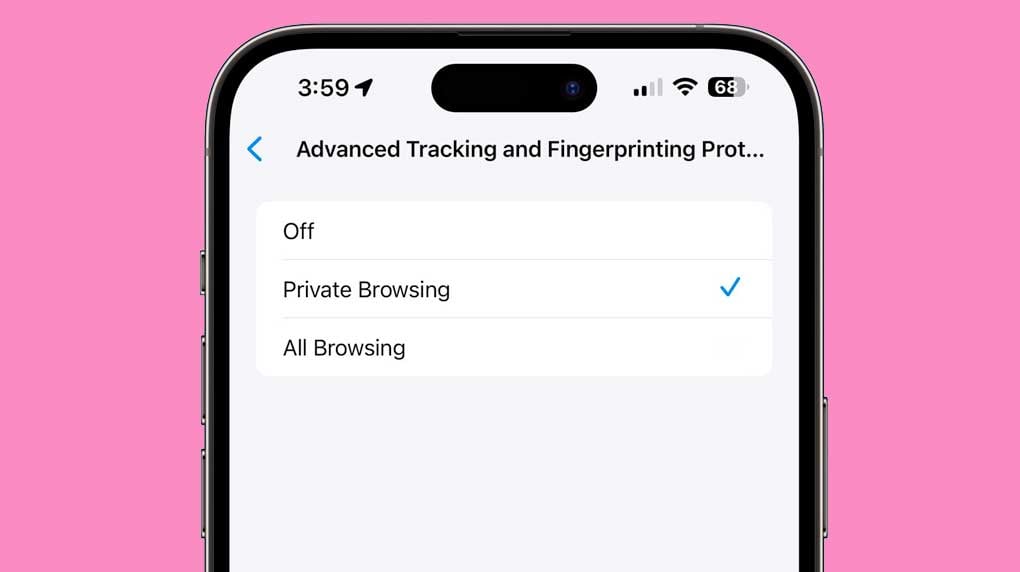
Understandably, this has raised concerns for digital marketers across the industry. Along with increasingly strict privacy laws in certain regions, it will become increasingly complex to follow your audience from their first impression to conversion. It will take savvy marketers, agencies, and analysts to assemble the full picture and navigate those challenges.
How? Shah suggested that digital marketers will need to get better at connecting separate in-platform data ecosystems. Think Meta, Google Analytics 4, and so on. While those platforms are working on revising their tracking and attribution to deal with the so-called cookieless future, they’ll only provide you information on their own ecosystems. Marketers will have to figure out how everything connects, using bridging tools like Google Tag Manager.
However, even outside of these technological shifts, that takes the right attribution model.
First, remember that you’ll need both demand creation and demand capture, but that they’re separate parts of a customer journey that do different things.
Demand creation happens earlier in a buyer’s journey, when you’re educating them on a problem and creating demand for its solution — usually through educational pieces and less conversion-focused content.
Demand capture is all about actually converting the roughly 5% of prospective customers who are ready to buy (and who have been primed by demand creation content). It’s easy to attribute a disproportionate amount of revenue to your demand capture, when demand creation is an equally important piece of priming leads.
Shah brought up an illustrative example: the parable of the pizzeria. In the parable, the owner of a pizzeria wants to bring in more business, so they hand three members of their team discount coupons in three colors: red, green, and white. In exchange for a discount, they’d bring in brand new customers and boost the store’s revenue, overall. The best seller would be the one who brings in the most customers with coupons of their color. Simple and straightforward attribution, right?
In the parable, customers keep coming into the pizzeria with green coupons. The owner understandably assumes that the salesperson with green coupons is their best performer. They’re bringing in tons of new traffic, after all!
Here’s the catch. The business is somehow doing worse, despite all of these new customers. How could that be? As it turns out, the green coupon salesperson has been hiding in a bush right in front of the store. Whenever they saw a customer about to enter, they handed them a coupon. In other words, the store was only getting the business it would have gotten without the green-coupon salesperson — but assumed that they were responsible for every sale.
This is the same way that end-of-journey conversion points can sometimes get the credit for a disproportionate number of new sales. If you overinvest in these channels, but ignore the touchpoints that are contributing to and generating plenty of that demand, your new sales pipeline will suffer. This is why it’s important to build a proper model for attribution.
Once you have a system, ensure you’re consistent with campaign names and other key identifiers — you don’t want your organizational system to fall apart as a project scales up. Auto-tagging and tracking URLs can help keep your attribution accurate as more moving pieces launch, and help you identify which parts of a campaign are working.
It’s also important to remember that the actual value of your KPIs changes over time, as your business evolves.
Take Major Tom’s client OUAI, who identified online revenue as their primary KPI. As their business grew, Major Tom identified customer acquisition as a more important KPI for long-term growth. While revenue was obviously still crucial, customer acquisition would throttle growth in the long run, and the KPI must be re-prioritized accordingly. It’s a reminder that KPIs aren’t important in and of themselves. They matter because of the value they represent for your brand. If you aren’t sure of that value, or it changes, take the time to reevaluate.
Looking for actionable steps before your next campaign launches? Be sure to action:
There’s maybe no better way to summarize the session than this quote from British Mathematician Lord Kelvin:
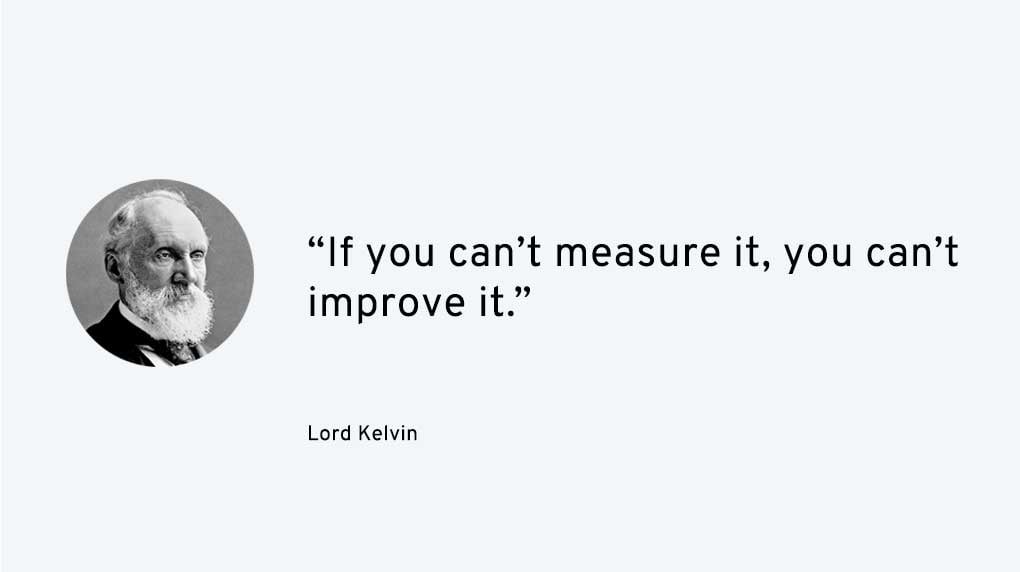
They’re words that all digital marketers should live by.
This session examined the broader business and economic trends affecting our industry — and how you can weather them. Morton spent the session discussing B2B marketing solutions that your brand can use to grow and win, even in shifting, uncertain environments.
First, Morton stressed that macro trends will always beat individual performance. If your entire industry is facing a downturn, even a best-in-class campaign will take a hit. These tips aren’t about ignoring those larger trends, but minimizing their effects on your business.
To do that, you need to learn how different pillars of marketing — Strategy, Creative, Public Relations, Paid Media, Analytics, and Attribution — serve each other and can reinforce each other. This creates a flexible, resilient model that can help you when you need to evaluate where to maintain your marketing budget and where to cut back.
For more thoughts from Major Tom, check out our blog on how to manage your digital marketing spend during challenging times.
The good news from this session? Digital is still a growth area in marketing, even though the rest of advertising is fairly flat, regardless of industry.
What’s most important when evaluating where to invest limited funds is a scientific approach to campaign measurement. Think of each campaign as a hypothesis, which runs as an experiment and provides useful data (your agreed-upon KPIs). Be sure to look at that data and ask yourself: what’s working? What’s not?

Be honest, and we mean real honest with how a campaign performed. It's okay to admit if a campaign wasn't successful as long as you have learnt from it. Saying otherwise will have you taking future campaigns (and remaining marketing dollars) down the wrong path.
This session looked at the increasingly complex journeys B2B prospects take on their way to a purchase.
First of all, you have to reckon with the fact that 86% of B2B buyers start their journey with a Day-1 list of brands that are already on their minds. This means that exposure is happening before the intent to buy — putting unfamiliar brands at a disadvantage from the starting line.
That doesn’t mean you’re boxed out of the whole journey if you aren’t on that Day-1 list. Jarvis mentioned that 21% of buyers discover their favorite brands during a search. Plus, 42% of search, video, and display ads do influence buyers’ decisions. On that note, it’s important to note that the B2B generation is now digital native. While it’s easy to assume that decision-makers prefer more “traditional” channels, at this point, they’re more likely than not to have grown up with the internet. That means channels like YouTube and TikTok are no longer alien to B2B buyers. For a bit more context, check out this useful resource by Google.
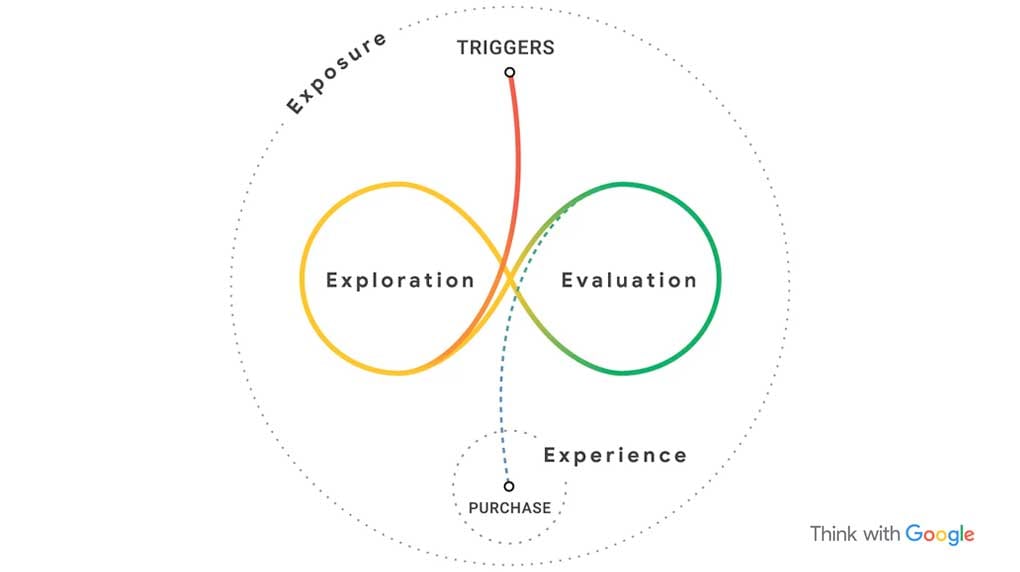
What does the rest of their journey look like? Longer, and more complex. Jarvis mentioned that the average B2B buyer will take 31 weeks to arrive at a purchase, encountering about 17 stakeholders across about 40 touchpoints before they get there. 68% of these buyers are researching every single week along the way. That means it’s harder for you to follow a prospect throughout their entire journey — but it also means that there are more opportunities for you to reach them.
How are businesses dealing with these changes? Jarvis called out three main ways in which B2B brands are evolving to address the increasingly complex journey and the increased competition for their digital marketing:
Since prospective clients likely start their journey with a day-1 list of businesses, Jarvis noticed that B2B leaders are switching from a focus on leads to a focus on signals.
In other words, using AI to identify more and earlier signs that a prospective client is starting their search for a B2B provider. Personalized, optimized drip feeds of content that better address customers’ interests once they start exhibiting those signals can help create new and earlier touchpoints between your business and theirs.
This led to another big point of fascination for Jarvis: the use of AI technology as a marketing multiplier. In what became a running theme of the conference, he discussed how AI can help accelerate and optimize certain marketing processes:
While we think there are some important caveats to consider before embracing this kind of wholesale use of AI (we’ll address those shortly), Jarvis did cite the compelling stat that 63% of AI adopters saw an increase in revenue, while 44% saw a reduction in costs.
Whatever its benefits and drawbacks, it’s clear that AI will be one of the major forces influencing the course of digital marketing in the days to come.
At Major Tom, we’re big believers in the power of AI — if you use it the right way.
That was a recurring theme across the slate of AI-focused sessions at the conference. We heard from multiple speakers focused on the efficiencies and shortcuts that AI provides to marketers.
For example, ReBecca Via from Couture Marketing Group shared a few ideas that we absolutely loved. Tips like using AI as a pulse check to evaluate your content and ideas against your client’s goals or your business goals, say.
Or, if you need to scale and reuse a piece of content (on multiple platforms or in multiple formats), AI can be a useful tool for revising it to fit those new formats. Think of this as preserving a certain level of consistency without re-posting the exact same piece over and over again, and exhausting your audience along the way. After all, as we mentioned in our recent look at Threads, your content should be tailored to its platform, whenever possible.
What we didn’t see much of were discussions of the areas in which AI is still limited. Of course, it’s worth getting excited about the possibilities, but we’re cautious about a worrying trend: the idea that you can just “let AI do everything for you”.
We would have liked to see more discussion of some important areas for caution, such as:
After all, it’s important to understand the strengths of generative AI, but also the flaws and key considerations that need to be addressed before we can best deploy them in our work.
If you’d like to learn more about how to use different AI platforms for different aspects of digital marketing work, we recently shared our thoughts in a separate post you can find here.
Content is the backbone of what we do as digital marketers, so this topic was obviously a big one.
A litany of experts led discussions on how to make content with the most “oomph” for our audiences, covering everything from the importance of clear, simple messaging to content structure and choosing your channels.
Generally, our favorite panels fell into two categories: how to create compelling content, and how to effectively amplify the content you have.
First up, this session was all about bringing simplicity and clarity to your messaging.
It can be easy to forget that our audience doesn’t always have (or need) the same level of knowledge as our clients. While it’s important to convey the right information to your audience, the main takeaway from this session was that trying to share too complicated a message is a surefire way to lose your audience. That can mean more bounces from an overwritten webpage, low conversions if a landing page is unclear, missed sales quotes, etc.
Of course, figuring out a simple, clear, and on-brand message takes hard work. Spiotto stressed that many businesses skip this crucial step, bringing campaigns to market without understanding exactly how they help their audience “survive and thrive.”
Don’t worry about being clever, or artistic.
Simple, effective messaging should be used so your audience doesn't need to expend extra energy to understand what you mean.
To do that, Spiotto recommended using the “Storybrand framework” which looks like the below:
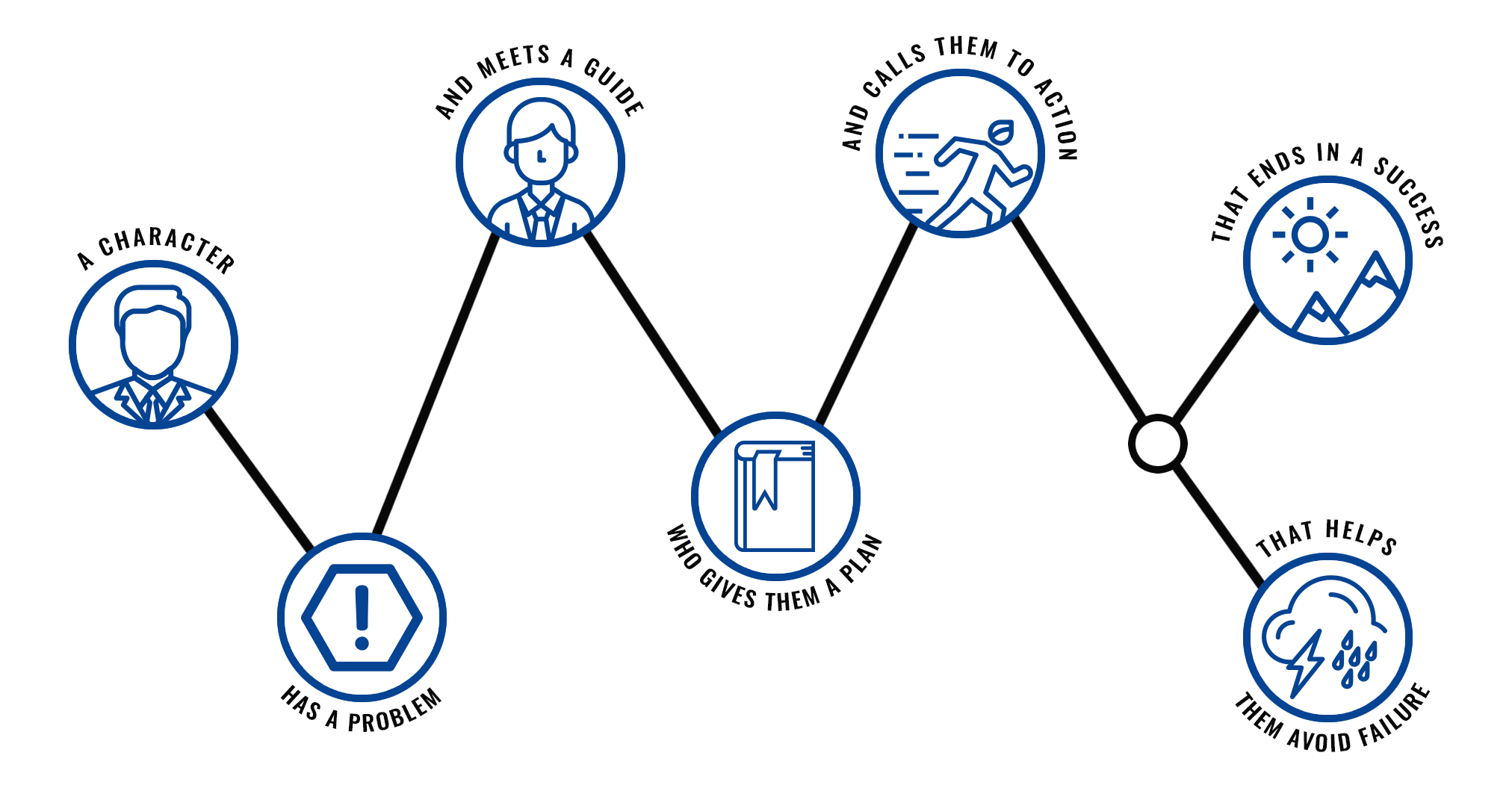
This framework asks the specific questions your messaging should answer:
If your brand is particularly complex or offers a range of services, ask yourself what overarching problem you solve, and write to that.
From there, you can create sub-messaging for different services, audience personas, contexts, etc., but you should have a better understanding of that core, compelling message to offer your audience.
Ryan Brock's session was all about taking that message and figuring out the right way to deploy it. Brock emphasized that topic clusters and content pillars are the best way of approaching effective SEO content.
Why?
Because the B2B buying journey is extremely complex. So much so that approaching it as a traditional marketing funnel — in which leads only move in one direction, through a fixed set of touchpoints in a specific order — doesn’t reflect the way in which your audience actually finds and engages with your content.
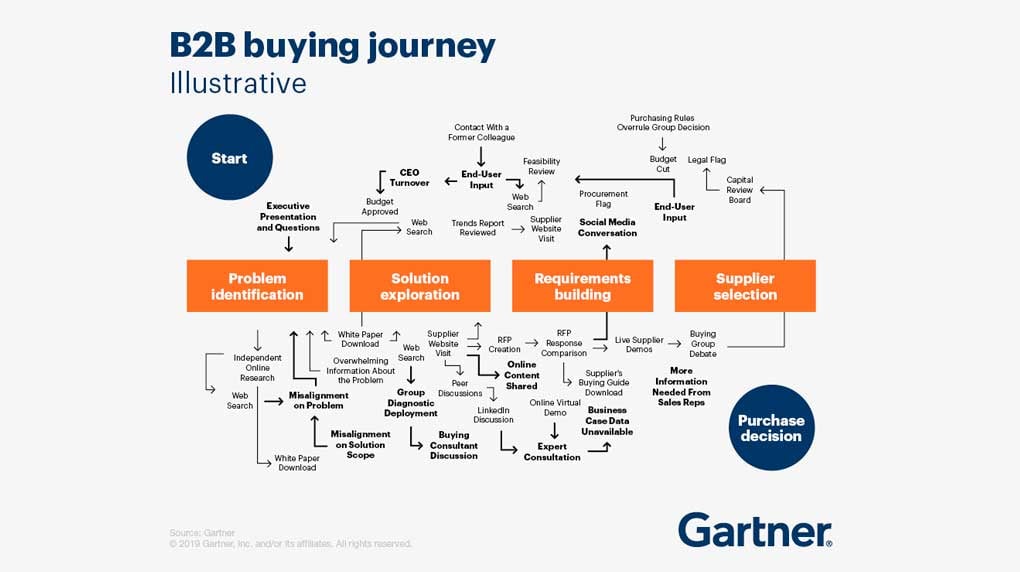
Instead, this session made the case for thinking of your customer’s journey as a “spiderweb”: a network of related nodes that your audience can traverse in any order or direction, according to their needs and interests.
Embracing this framework with content pillars, rather than forcing your audience into a funnel stage that is misaligned with their intent, helps meet prospective clients where they’re at, and helps them navigate your content in the way that’s most useful to them. This also mirrors Google's session where we shared their framework of the "Messy Middle".
To execute this framework, you need to:
This is really two wins in one, as many of these steps dovetail with basic accessibility principles that will only increase the size of your audience. You can learn a little more about that with our blog on making your websites more accessible.
Moving onto video content, Ryan Ross dug into some strategies to ensure your audience actually sees the content you’ve painstakingly prepared. He shared his strategic approach to content creation, as well as how to better leverage social media to expand your reach.
For example, Ross discussed how your YouTube video content is at the mercy of the platform’s algorithm, which currently favors a high number of clicks and a higher watch percentage. In other words, if you’re trying to create content that the algorithm likes, stretching out your videos for more watch time won’t produce results. Instead, you want to keep viewers around for more of the video. Alongside standard best practices like bright, eye-catching thumbnails with a face, will help get more eyes on your videos from within the platform.
YouTube shorts are also an incredibly popular format, and with the algorithm pushing shorts hard, using this format is an easy way to help boost your reach.
Remember, Google owns YouTube so if you play your cards right, your video can be shown at the top of Google's search results page, winning you a larger audience.
On TikTok, Ross’s recommendation was to lean into the trendy, short, ad-hoc feel of the platform. If you want your videos to grab attention, use trending sounds and filters and aim for off-the-cuff energy, like an intern has put the video together without the whole business looking over their shoulder. Just as importantly, if you want to properly leverage TikTok, you should be posting 3+ times a week.
That leads to a crucial, general piece of advice that we took away from this session. Across all social media platforms (including YouTube and TikTok), consistency is king. Almost all social media platforms will reward a regular posting cadence. In YouTube’s case, you’ll even be punished by the algorithm for posting less than once per week — and have YouTube stop promoting your content.
While the specifics of each platform’s algorithm vary, this general principle stays the same. If you want your content to be seen, it needs to be paired with a consistent, planned posting schedule.
When you take a step back and approach your content from a data-driven, strategic perspective, sometimes it can feel like the creative side of the equation disappears.
This session was all about how to effectively combine that strategic approach with impactful, creative thought.
On the strategy side of the equation, Cortizo emphasized that you must know your goals in advance. Questions she proposed were:
Then, ask yourself some key questions about the value your brand offers the audience, or the one central message that you need to share. Remember Kristin Spiotto’s seminar on bringing clarity to your messaging? This is where that comes in.
Remember, audiences tend to make decisions with their gut and justify them after the fact, so emotional impact is a big piece of the puzzle to achieve success.
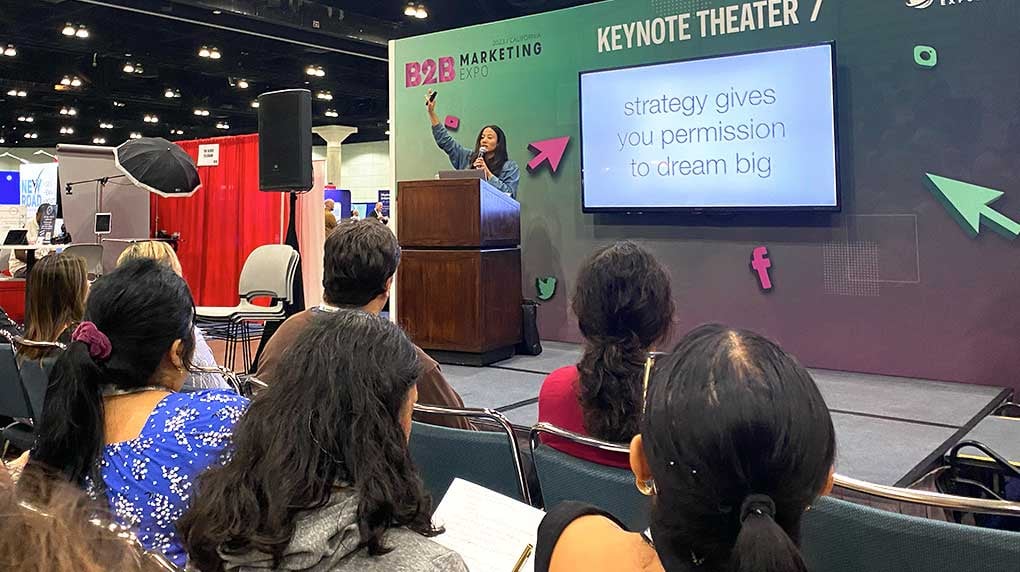
Knowing the answers to these questions gives you a strategic framework to work with. In Cortizo’s words, it lends confidence to big ideas. And gives you permission to dream big when you start bringing a campaign to life.
On the creative side of the equation, she stressed that channelling creativity can actually be harder than organizing your strategy — and cited The Artist’s Way as a great resource for making that happen.
Some tips:
Identifying and replicating the conditions that make those things happen can help recreate the “spark” that goes into creatively inspired work.
Cortizo also emphasized why channelling creativity in our work matters.
Simply put?
Marketing can’t look the same. If your campaigns and content don’t have something unique and impactful to capture an audience’s attention, they’re unlikely to gain the traction you need for success.
Your campaigns need to stand out.
Want to read more on adding a creative spark to your marketing? Check out Major Tom’s previous blogs on what it takes to do creative work well:
This session talked even more about how and why to make B2B marketing campaigns that stand out from the crowd.
First up?
Try changing the context of a product or service. This can help audiences see it in a way that they haven’t before, and rediscover why they should be excited about it. Njoten cited a Channel 4 campaign for the Paralympics as the perfect example.
Previously, messaging for the Paralympics had been repetitive and even a little condescending to the athletes — focusing on the idea that “they’re just like us.” The Channel 4 campaign took it even further, arguing that these athletes aren’t just like us, they're better than us. They’re superhuman.
The result?
Over 87% of viewers tuned in for the Paralympics themselves. It was a huge win driven by a simple change in perspective.
For more on understanding and addressing your own biases, check out our look at inclusive marketing from the Building a Better Future Together conference.
Another way to stand out is by doing the opposite. It sounds simple, but sometimes rejecting the conventions of a specific industry, product, or marketing channel can be an ultra-efficient way of grabbing attention. Njoten brought up Coinbase’s minimalist approach to a Super Bowl ad, which broke up the high-budget polish of other ads with a simple (and effective) riff on the bouncing DVD screensaver meme.
But remember, to break the rules you have to understand the rules first. Making an ad like the one from Coinbase takes a strong understanding of the competition and the format. And your content should always be tailored to the channel it appears on. Coinbase’s ad might have been underwhelming and generic in, say, a Twitter feed. But compared to the bombast of other Super Bowl ad spots? It was a touchdown, drawing enough attention to actually crash their site.
Sometimes, you can go against the grain by being outright annoying. Obviously, this is a tactic you need to use sparingly (and strategically). Njoten brought up the Go Compare campaign featuring an intrusive opera singer as an example of doing this in a way that helped the brand grab attention with its tongue fully in its cheek, including a series of follow-up ads poking fun at the concept because it has been so successful.
Caution: This song will get stuck in your head; play at your own risk.
Of course, things are slightly different for a B2B audience — and Njoten also looked at several B2B marketing campaigns that took similar approaches to making an impact.
For example, the “Earth Campaign”, a Cannes Lion-winning partnership between the Brazilian Stock Exchange and the UN. This campaign rebranded the earth itself as “Eart4, The World’s Most Urgent IPO” in a bid to sell their audience of businesses on the importance of adopting sustainable policies.
In other words, it took a cause that’s traditionally framed as a social good and associated with the non-profit space, then reframed it through the lens of value and investment. A completely different take that also spoke directly to their audience, and helped get businesses to buy into the fight against climate change.
Another great example was Liquid Death, a brand that aimed to repackage canned spring water in an edgier package for a completely different audience demographic. Specifically, the brand used its packaging and design to position itself as a socially acceptable alternative to alcohol for young men who didn’t want to drink. Paired with a tongue-in-cheek approach to its new aesthetic, the brand secured a completely different positioning from its competitors by adopting lessons from other industries, drawing over $33 million in funding.
Our big takeaway: even worse than a polarizing brand campaign is an audience that doesn’t know your brand exists. Sometimes, you need to take big swings to make an impact.
This session asked an important question: now that people have and continue to nail the data and analytics of their campaigns, what is the key difference-maker for your ads?
Profound and impactful creative.
In other words, understanding and using your data for stronger marketing is crucial, but it’s also the table stakes. You need to bring a unique perspective and well-executed creative to the table in order to truly make an impact. (And Zaboski knows a thing or two about well-executed creative to tell a story. He was a Senior Animator on Disney originals such as The Lion King and Snow White.)
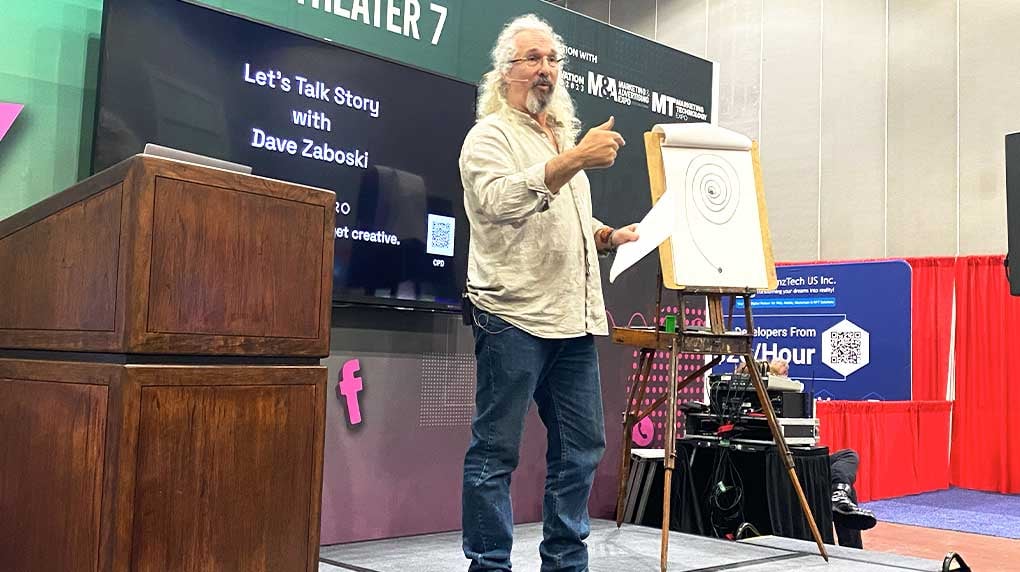
So, to do that, Zaboski took a deeper look at how to bring the timeless power of storytelling to your campaigns, with five universal laws of creativity:
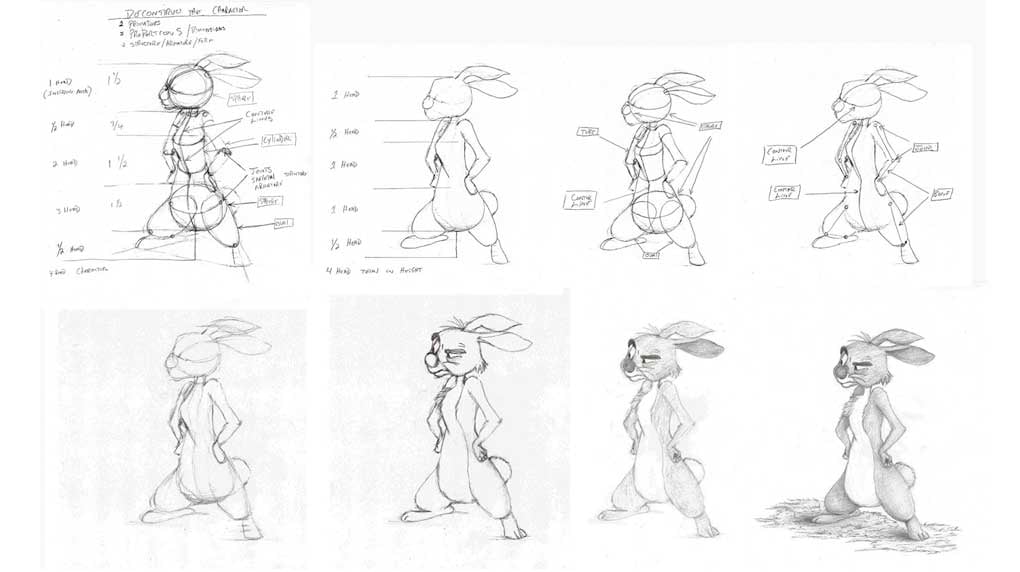
One quote Zaboski shared that really resonated with us was:
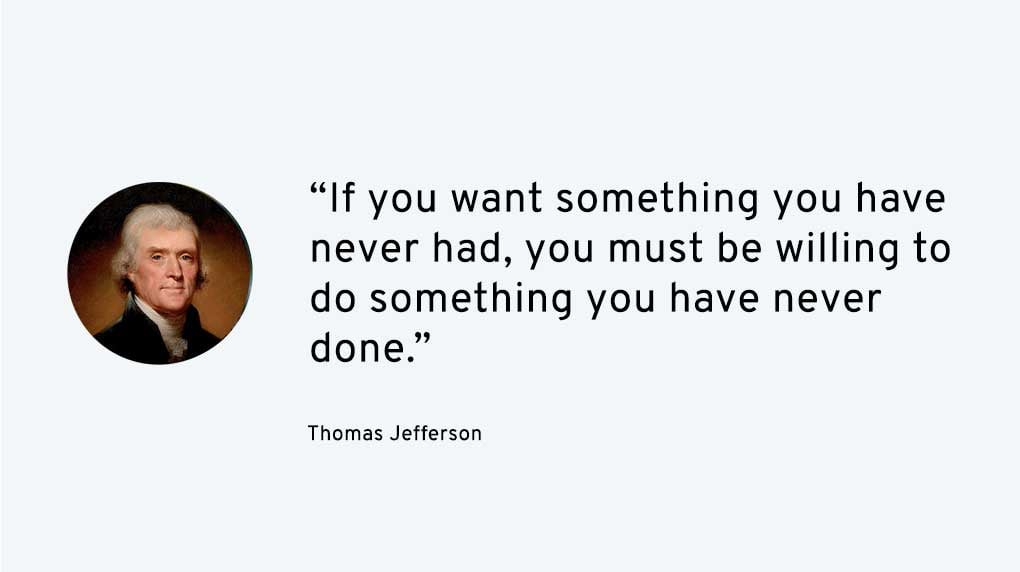
Creative risks are never easy to take as a brand, but they’re what propel those big, business-changing wins on a campaign.
If you're looking for the most important ideas from the event, let’s recap the must-read takeaways:
You may have noticed that none of these topics are necessarily new, in and of themselves. Other than AI, all of these topics like content and attribution were discussed at the very first B2B Marketing Expo in 2019, and at other popular conferences like Inbound.
While the best ways to tackle any of these challenges may vary, it’s a good reminder that these are hard areas to perfect. Us marketers continually evolve our approach as we learn more about what works and what doesn’t.
Just as importantly, it means that there’s no silver bullet for success. It takes constant reflection, analysis, and improvement to deliver the truly exceptional campaigns that will elevate a brand.
If you want to continue on that journey with insights and expertise from Major Tom, scroll down to subscribe to our Mercury blog for more marketing insights.
Receive exclusive action-focused content and the latest marketing insights.